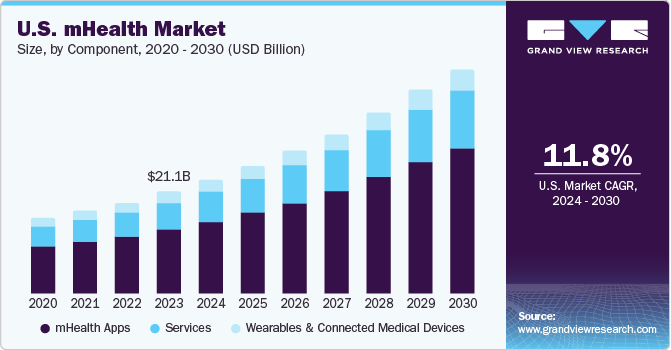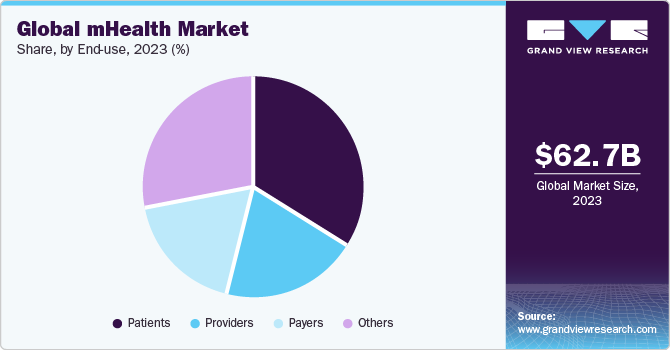SPONSOR: CardioComm Solutions (EKG: TSX-V) – The heartbeat of cardiovascular medicine and telemedicine. Patented systems enable medical professionals, patients, and other healthcare professionals, clinics, hospitals and call centres to access and manage patient information in a secure and reliable environment.

mHealth Market Is Projected To Expand At A CAGR Of 25.7% By 2025
- Global mHealth market size is expected to reach USD 151.57 billion by 2025, progressing at a CAGR 25.7% over the forecast period, according to a new report by Grand View Research, Inc
- The market is majorly driven by growing geriatric population, rising prevalence of chronic diseases, and increasing penetration of smartphones and internet connections
According to a report, “ mHealth Market Analysis Report By Participants (Mobile Operators, Device Vendors, Healthcare Providers), By Service (Diagnosis, Monitoring, Healthcare Systems), And Segment Forecasts, 2018 – 2025 â€, published by Grand View Research, Inc.,The global mHealth market size is expected to reach USD 151.57 billion by 2025, progressing at a CAGR 25.7% over the forecast period, according to a new report by Grand View Research, Inc. The market is majorly driven by growing geriatric population, rising prevalence of chronic diseases, and increasing penetration of smartphones and internet connections. Technological advancements are leading to product innovations in the area of mHealth, which in turn will bode well for the market.
Growing inclination towards preventive healthcare and subsequently rising subscription to mHealth apps have been working in favor of the market. mHealth apps exhibit several features that offer healthcare benefits to healthcare providers as well as patients. mHealth apps provide accessibility to health related information. mHealth apps also ensure continuous communication between patients and providers, thereby allowing providers to diagnose, recommend, and monitor patients without even seeing them in person.
Key players in this space include Apple Inc.; AT&T; Airstrip Technologies; Allscripts Healthcare Solutions; Google Inc; Orange; Soft Serve; mQure; and Samsung Electronics.
Adoption of smartphones with subscription to mHealth apps among adult population in the U.S. is rising in order to maintain routine check. For instance, according to a paper published in NCBI in February 2016, around 91.0% of adult population in the U.S. own a mobile phone, with 61.0% of them possessing smartphones.

Further Key Findings From the Report Suggest:
- In 2017, monitoring services held the largest revenue share owing to growing adoption of mhealth solutions for monitoring health conditions such as diabetes
- The healthcare system strengthening services segment is likely to register the highest CAGR of 27.7% over the forecast period
- Healthcare providers will be the most promising participant segment during the forecast period, mainly due to adoption of digital technology by healthcare facilities in order to optimize care management process
- In 2017, Europe accounted for the largest revenue share in the market owing to rising research initiatives in the area of mHealth
Participants Insights
The mobile operators segment dominated the mHealth market in 2017. Increasing number of partnerships of mobile network operators with mHealth service providers is one of the key factors contributing to the growth of the segment. Rising involvement of mobile operators in the healthcare sector is also supplementing the growth of the segment. According to a GSMA survey 2012, nearly 794 mobile operators were involved with mHealth in some way. This survey also showed that in 2012, there were nearly 269 mHealth services or products that were led by mobile operators.

The device vendors segment witnessed the second largest revenue share in 2017. Growing involvement of device vendors in mHealth is augmenting the . Device vendors are actively participating by providing security systems to the smartphones for reducing the incidences of data breaches pertaining to health records of the patients. This further results in growing adoption of mHealth by the general population.
Read more: http://www.digitaljournal.com/pr/4512981#ixzz65r40c8ML